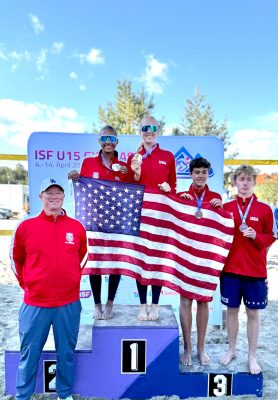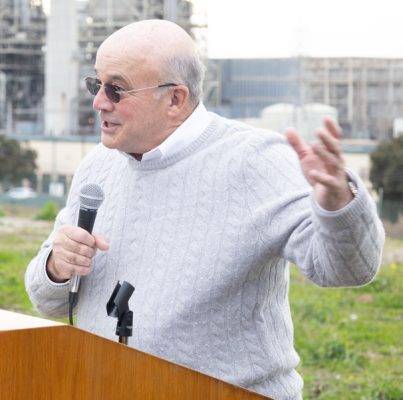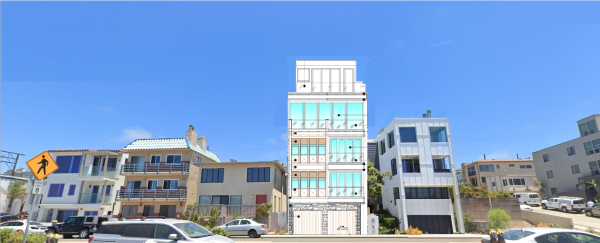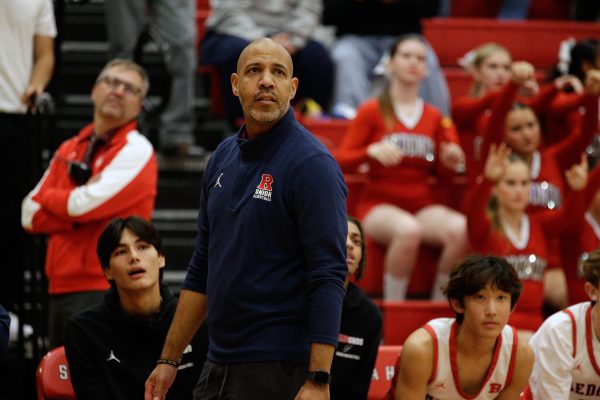Relieve stress, avoid burnout
“They gave us a checklist of what we needed to do to,” said Rampolla. “It also gets people aware about what we’re trying to accomplish and shows a level of caring about your employees. By doing this, we’re telling them that their health is important to us. It helps avoid burnout, relieves stress and lets them know we want them to be strong and healthy for their families. Our company is intense. We understand a lot is being asked of our employees. One way we can try to take care of them is to encourage them to take care of themselves.”
ZICO offers its staff the opportunity to join the Spectrum gym near its office for half the price. They also hung signs around the office that encourage healthy breaks and even some that have the number of steps it takes to get to different areas of the neighborhood, like Trader Joes (a quarter-mile away). They have bikes available for their workers to cycle to lunch and encourage employees to get outside and walk to different restaurants. They also have in-office yoga two times a week. Additionally, healthy snacks and, of course, ZICO water, are easily available around the office.

An important part of the process for Rampolla was making sure the employees were involved in creating a healthier atmosphere. Rampolla brought members of the staff together and jointly they decided to implement a “Commitment Day,” a program that encouraged coworkers to go one step beyond what they have done before. Laura Sauls, a marketing associate for ZICO, did an Olympic Distance Triathlon, a much bigger feat than the 10K she did a year before. For her, it was important to do something that pushed both her and her coworkers. A group of employees even recently participated in the Malibu Triathlon together. They pushed each other by training together and reminding each other to take the goal seriously.
“It’s all about stretching the limits slightly,” said Sauls.
The company even opened a ZICO employee Facebook page called the “Cow bell,” where employees are encouraged to write down their successes.
“It’s nice to see their talents beyond the work environment and look at wellness really broadly,” said ZICO HR Strategist Emma Zeledon. “It’s just inspiring to see what everybody is doing.”
Even though ZICO is a healthy brand and the synergy between the Blue Zones and ZICO were in harmony, Rampolla thinks that any business can become a designated Blue Zones Worksite.
“It just makes sense and will make the company succeed,” said Rampolla. “There are a lot of benefits for your business; the right thing is often the healthy thing. It doesn’t matter what company you are, there are a lot of easy things to do.”

The Beach Cities Health District (BCHD), the public health agency which brought the Blue Zones Project to the South Bay, was the first workplace to become a designated a Blue Zones Worksite.
“Some of the most unhealthy people work in healthcare,” said BCHD CEO Susan Burden. “We felt like we are a role model in the community, so we had to be first.”
The BCHD had already started down a path for a healthier workplace, but the Blue Zones checklist helped identify areas of potential improvement. One thing in particular that made a significant difference was hosting a “Purpose Workshop,” to help their employees look deeper into their lives and find what drives them.
“These types of programs save employees money and make people more productive,” said Burden. “People feel so guilty for being happy at work. That needs to change.”
The first city in the country to engage in a Blue Zones Project was Albert Lea, Minnesota, which ran a nine month “Vitality City” pilot program three years ago. In what the Harvard School for Public Health termed “the miracle in Minnesota,” health care claims for city employees dropped 49 percent, and absenteeism dropped 20 percent.
The Beach Cities were chosen among more than 60 cities who applied nationwide to become the first comprehensively implemented Blue Zones Project. As part of an initial assessment, Gallup polled local residents and found some startling signs of ill-health. BCHD had already established that 60 percent of local residents were either overweight or obese – slightly below the national average – but Gallup’s “Well-Being Index” revealed high levels of stress, anger, and worry locally. The beach cities ranked 176 out of 188 cities in stress, 160th in anger, and 178th in worry.
The Blue Zones Project seeks to impact everything from the size of the plates in people’s homes to the walk-abilty and bike-ability of roadways. But perhaps nothing is so vital to the success of Blue Zones Project locally as engaging people where they work.
Blevins believes that pledging to be a Blue Zones Worksite improves productivity in the long run.
“Changing of polices can be difficult,” said Blevins. “You have to start small and find the small wins first.”
BCHD started a “Wellness Committee,” of employees to help determine the things that they wanted to change in their environment. They decided to focus on three pillars: social, emotional and physical aspects of living. They also stressed the need to think outside of work and focus on personal goals as well as professional ones.
“Some times people are so go-go-go that they stop being focused because they’re working so hard,” said Megan Vixie, the Talent and Engagement Manager at BCHD. “We encourage our employees to take a break and stretch or go for a walk.”










